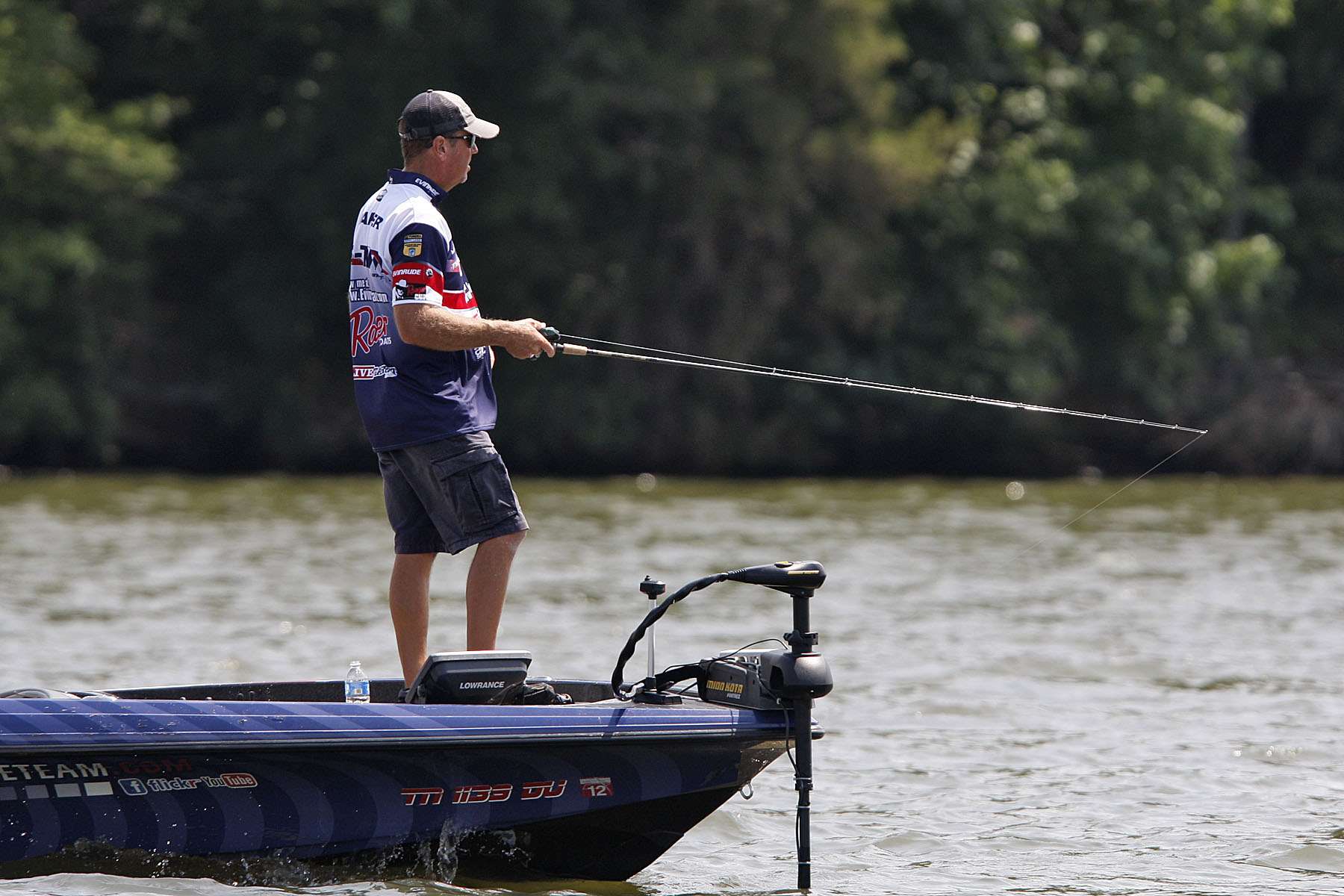
David Walker thinks many anglers make a mistake when trying to take advantage of summertime current flows in lakes like those on the Tennessee River chain. Current produced by power generation in TVA lakes will place bass in relation to structure. But not where you might think.
“Everybody likes to fish the back side of structure,” said Walker. “Don’t fish in the slack water. You want to fish where that current is actually striking objects the strongest, like the front side of bridge pilings.
“That current isn’t strong enough to bother them. Those fish aren’t scared.”
It does seem natural that bass would stay in the slack water and dart out into the current to feed. It’s simply not the case, according to Walker.
“If you’ve ever been around a dam or something like that, you’ll notice that the fish go right through that current. It doesn’t affect them.
“Granted, in a flood situation they might get out of it after a time, but we’re talking about a generation schedule, a few hours each day.”
Watching that generation schedule is the key to summertime bass fishing success on any relatively shallow lakes where power production creates a significant current, according to Walker, a Sevierville, Tenn., resident.
“At this time of year, the power generation schedules are going to be pretty accurate,” Walker said. “There’s a lot of power being consumed, with air conditioners running and what have you. When that current starts flowing, that’s the light switch to start catching fish again.”
Even if you don’t know the power generation schedule, just keep your eyes open for clues, Walker says. The best clue is the navigation buoys or any other stationary object, where you can see current pouring around it.
The next step in finding actively feeding bass is to find the current break the fish prefer that day.
“You can have a hot spot on a lake with a break that comes up to 8 feet on top, or you can have one where it comes up to 28 feet on top,” Walker said. “But there are going to be hot spots this time of year.
“I think that’s what makes summertime fishing tough, but fun at the same time in that you can really find concentrations of fish. You can fish a big, long ledge that looks good, but you don’t get any bites. But they’re all going to be at one spot on it. That’s what’s fun because once you find that one spot, you can just stay there and keep catching fish."
Walker searches for those hot spots in the summer with bigger lures. You might find a hot spot and never know it if you’re throwing smaller baits.
“Things grow throughout the year,” Walker said. “The shad start off little. The bass start off little. But everything has grown up by now, so I like to use really big baits – the biggest crankbaits, bigger swimbaits, that big spoon, bigger worms, 10-, 12-, 15-inch worms. However big a worm you want to use, that’s the best time for it.
“If you take a 12-inch worm out in the wintertime, you’re going to get very few bites on it. But if you shorten it down to four inches, all of the sudden you’re going to get a lot of bites on it. It’s just how it is. Summertime, to me, is about keying on bigger food because that’s what the fish are after. Even a 2-pounder will grab a 12-inch worm. They’re not afraid of it.
“And, normally, this time of year you’re going to have your cleanest water. So the shad colors are what I like to mimic those bigger shad. That’s what they’re feeding on, so give them what they’re already looking for.”
Walker spends a lot of his summer time on the water looking at his electronics, noting that this strategy will shorten your day.
“You can actually see the fish. When you start fishing the ledges, electronics mean a lot,” Walker said.
Once Walker finds the fish, he places a marker buoy a little differently than most. Instead of centering it over the hot spot, Walker places the buoy where he wants his boat to be, where he can most effectively cast to this concentration of bass that current has helped place there.
“Then you aren’t worried about catching your buoy,” he said. “It’s inevitable if you put it on the spot – make a bad cast or one that’s just a little too close and a fish goes behind it, then here comes the buoy and all. If you put the buoy next to where your boat is, and then just stay there, you’re in better shape.
“Hopefully, you’ve got some reference points in the distance, like a house or a (lake) point that you can keep watching in order to make the proper cast to those fish.”
Follow Walker's advice, and you might find some late summer success as well.
Originally published August 2011




